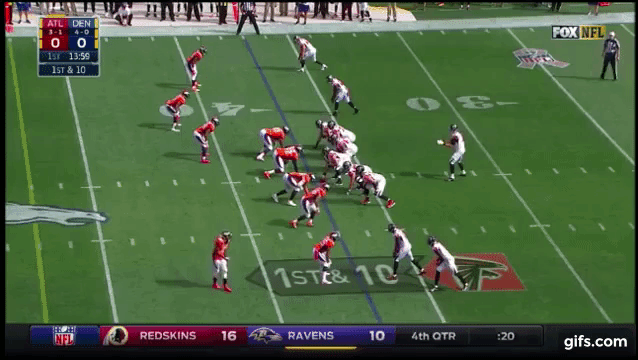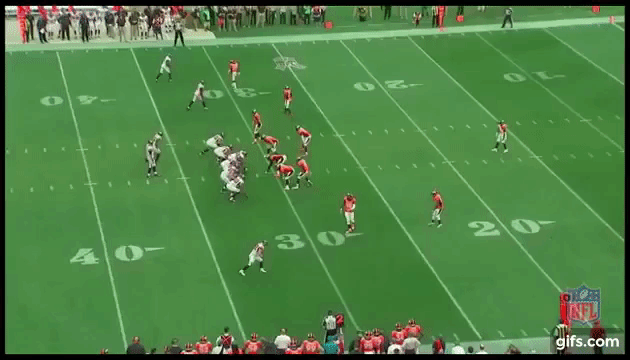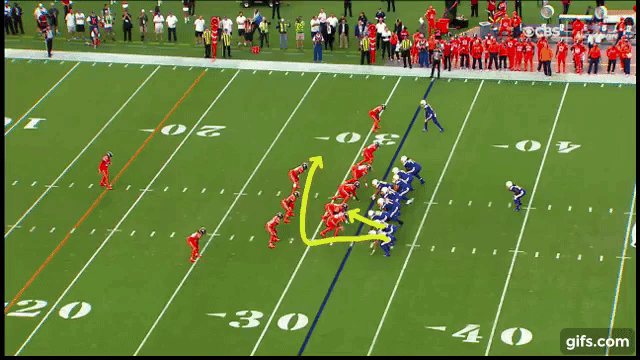© 2025 ALLCITY Network Inc.
All rights reserved.

The Denver Broncos have come back down to earth after their hot 4-0 start. After losing two consecutive games in fairly similar fashion—getting down early, poor quarterback play, and the defense getting exploited in the short passing game—it was time to dig into the film and see what’s not working right now.
While there are several questions on the offensive side, and we’ll have time to analyze the film on that side as well, the more surprising issue to come out of these defeats has been the defense.
Look, the Broncos ‘D’ is far from the problem, but they also haven’t been their usual dominant selves with both the Atlanta Falcons and San Diego Chargers exploiting similar areas.
With that, we’re on the case to figure out what the issues have been in the last two weeks.
Exploiting the linebackers in coverage
There was a concern after the offseason—with the loss of Danny Trevethan and no added help—that the inside linebacker group wouldn’t be as good this year. Truth be told, teams like the New England Patriots tried to attack the defense in similar ways back in 2015 but simply didn’t make the plays. That’s the gamble for offensive play-callers when trying to target running backs in the passing game, you better hope they haul in the catch.
While San Diego’s RBs weren’t all that prolific catching the ball, Atlanta’s certainly were. The Falcons put together a huge game with their backs, racking up 167 receiving yards, on seven catches, coming off of 11 targets. That’s a staggering figure, particularly for Tevin Coleman, the Falcons speedy back gave the Broncos inside linebackers massive headaches.
Coleman made most of his yards off of two big catches. On both plays, he was flexed out in the slot (flexing out your running backs, tight ends or putting a receiver in motion are a common pre-snap tendency that teams use to identify coverage better or manipulate coverage to their advantage). While flexed on these two plays Coleman had Brandon Marshall on him, a good cover linebacker in his own right.
The first play was a huge 48-yard gain on the opening drive of the first quarter; this was a pick play with the TE taking up enough space to allow Coleman to cut behind him and create a cushion on an inside cut.
The second play came early in the third quarter and extended the lead to 20-3, really breaking the game open for Atlanta. In this instance, Coleman is flexed out on a side with two other receivers (an off-balance alignment). When the RB goes in motion, Marshall shifts out to the slot to cover him. The LB is burned up the seam by Coleman and help over the top doesn’t come soon enough, allowing the runner to get into the end zone.
Marshall and especially the Broncos other ILB, Todd Davis, are suited in coverage, but their biggest strength is sitting underneath where they can read and react to the ball. Turning and running after high-caliber athletes is not their strong suit.
Both these plays can happen, sometimes a running back is just going to outrun even the best linebackers. While pick-plays are more common than the I-formation in today’s NFL.
Though Atlanta is the only team that’s been able to make a difference by throwing to their backs, the Broncos rank fifth in the NFL in receiving yards from the position, allowing 295. RBs have been targeted 38 times so far (seventh-most in the NFL) as that number climbs the defense will have to perform better in this area.
Struggles covering the tight end
While ranking at the top in almost every defensive statistic in 2015, the Orange and Blue ‘D’ didn’t do so well at covering the opposing tight ends. Denver allowed 914 yards, seven touchdowns, and 79 receptions to TEs last season. Ranking tenth in the NFL for yards allowed.
This year, tight ends have 347 yards sixth-worst in the league. Even more telling is that TEs have been targeted 47 times, no defense has had the position thrown to more times with the exception of the Cleveland Browns who just faced the New England Patriots.
The issue is similar to covering backs in the passing game. Teams are moving around their tight ends, particularly trying to flex them out and get favorable matchups against Todd Davis who’s not at his best turning and running after taller more athletic targets.
Another commonality we’re seeing is lots of pick plays with TEs, something the Chargers did by putting multiple ends on the line all stacked on one side.
More so than that, teams are targeting short-to-intermediate routes and particularly trying to attack the middle of the field. It’s pretty easy to understand why this is; the Broncos have an outstanding group of cornerbacks and teams are trying their hardest to stay away from them.
As a result, teams are attempting off-balance formations to get favorable matchups, as well as flexing out tight ends and using the typical pick plays. In doing so, they can target not just the ILBs but also strong safety T.J. Ward and if they do find the corners in coverage they can at least create some cushion with picks.
Offensive coordinators are trying to use the Broncos aggressiveness against them. Denver likes to play up on the line with its backers and safeties taking away space and teams are taking advantage by making using crossing routes, using pick plays, and making tough timing throws. We cannot dismiss how good QB play has been in these two losses. Phillip Rivers and Matt Ryan made hard throws, and their decision-making was close to perfect.
Running the ball
Even more than running with success against the Broncos ‘D’ is simply committing to running and having a balanced attack. Denver has faced the second-most rushing attempts in the NFL a statistic that is dominated by teams with losing records.
That’s very telling to the approach that opposing play-callers have, and it’s working, as the Broncos have allowed 520 yards, sixth-worst in the NFL. When at their best in 2015, teams simply gave up running on the Broncos after a while, as there was just nowhere to go. This allowed the best passing defense in the NFL to sit back and do what they do best, abuse opposing quarterbacks and let their star cornerbacks capitalize.
That’s much harder to do without a great run defense. This is the area in which the absence of Malik Jackson and Danny Trevathan is most felt. Jackson was a one-man wrecking crew, and with Derek Wolfe, there was no getting through gaps inside. While Trevathan was at his best against the run, racking up tackles and flying to the ball, often stopping runs that the line redirected outside for little to no gain.
Being able to run the ball and stop the run is the least prioritized area of the game in today’s NFL, which is why classic run stuffing LBs and RBs are so underpaid. But it’s still a very important area of the game.
Avoiding the pass rush
Similar to how teams are trying to avoid Broncos cornerbacks, they’re also trying their hardest to avoid and limit the impact of the pass rush.
The timing has been crucial to this with quick passes in the short and underneath areas. Especially in key opening drives both Rivers and Ryan had several snaps out of shotgun allowing them to see the field better and have a greater cushion from the Broncos pass rush.
Establishing the run is also big in this, as the defensive front can’t simply pin their ears back. Finding early scores is also very important since, again, it’s very hard to play against the Broncos when they have a lead with the way their defense is constructed.
Teams are simply trying to always get positive yards, always keep momentum on their side. The important thing against the Orange Crush isn’t so much making big plays or exploiting one particular area, but specifically getting forward at all times. As soon as you throw an incomplete pass, or get stopped for no gain, then you’re playing on their terms, and it’s trouble.
Final thoughts
The bottom line is that once you look at the film, you can see that even though the Broncos defense isn’t dominating like they did in the first four weeks, they’re still playing at an extremely high level. Additionally, the issues seem very reparable.
San Diego and Atlanta executed some very good and balanced game plans and even with all that, neither team scored more than 24 points.
However, these issues can’t just be dismissed. Especially given the particular areas teams are exploiting. Denver could have trouble against teams like the Patriots who use lots of throws to RBs and multiple TE sets. For the Broncos to get back to greatness, they need to tighten things up, allowing them to set the tone and play the game on their terms.
Comments
Share your thoughts
Join the conversation







